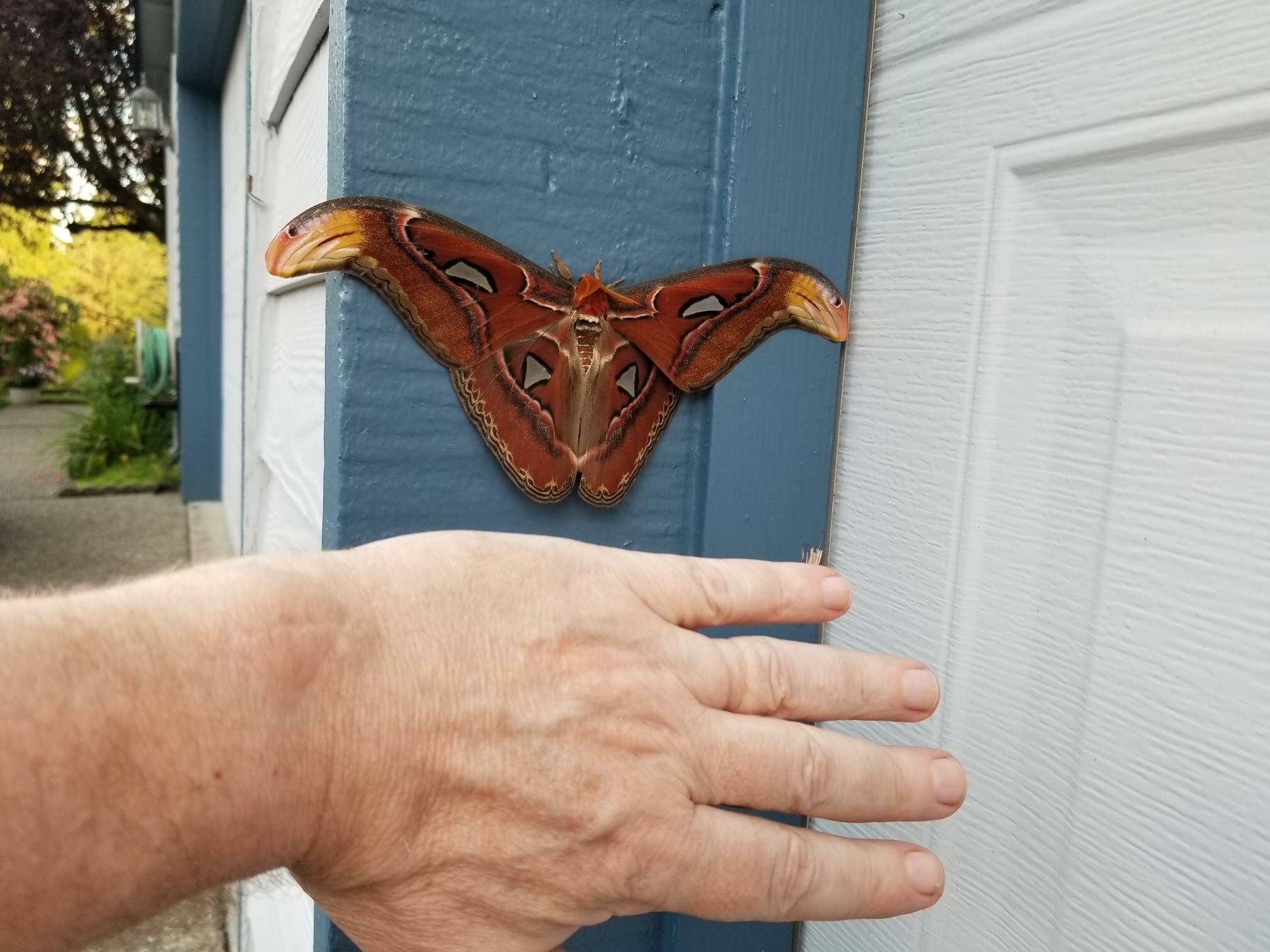The atlas moth is one of the largest known moths in the world–with a wingspan of up to 10 inches wide–and the first U.S. reported sighting occurred in the City of Bellevue. The moth sighting was reported to the Washington State Department of Agriculture (WDSA) by a University of Washington professor on July 7.
WSDA entomologists identified the specimen as an atlas moth and sent it to the United States Department of Agriculture (USDA) for confirmation. USDA’s Animal and Plant Health Investigation Service confirmed the specimen as an atlas moth on July 27.
“This is a ‘gee-whiz’ type of insect because it is so large,” said Sven Spichiger, WSDA managing entomologist. “Even if you aren’t on the lookout for insects, this is the type that people get their phones out and take a picture of–they are that striking.”
There are currently no known traps for atlas moths, and the WDSA is hoping to determine if there are additional moths in the area based on public reports. Washington residents who believe they’ve seen an atlas moth are encouraged to photograph, collect, and report the moths if seen. According to WSDA, atlas moths do not pose a threat to public health and can safely be photographed, handled and collected.
“This is normally a tropical moth. We are not sure it could survive here,” said Spichiger. “USDA is gathering available scientific and technical information about this moth and will provide response recommendations, but in the meantime, we hope residents will help us learn if this was a one-off escapee or whether there might indeed be a population in the area.”
While research on atlas moths is limited, entomologists believe host plants may include apple and cherry trees. Washingtonians who believe they have seen an atlas moth should send a photograph to pestprogram@agr.wa.gov for identification, and include the location where the moth was spotted.


